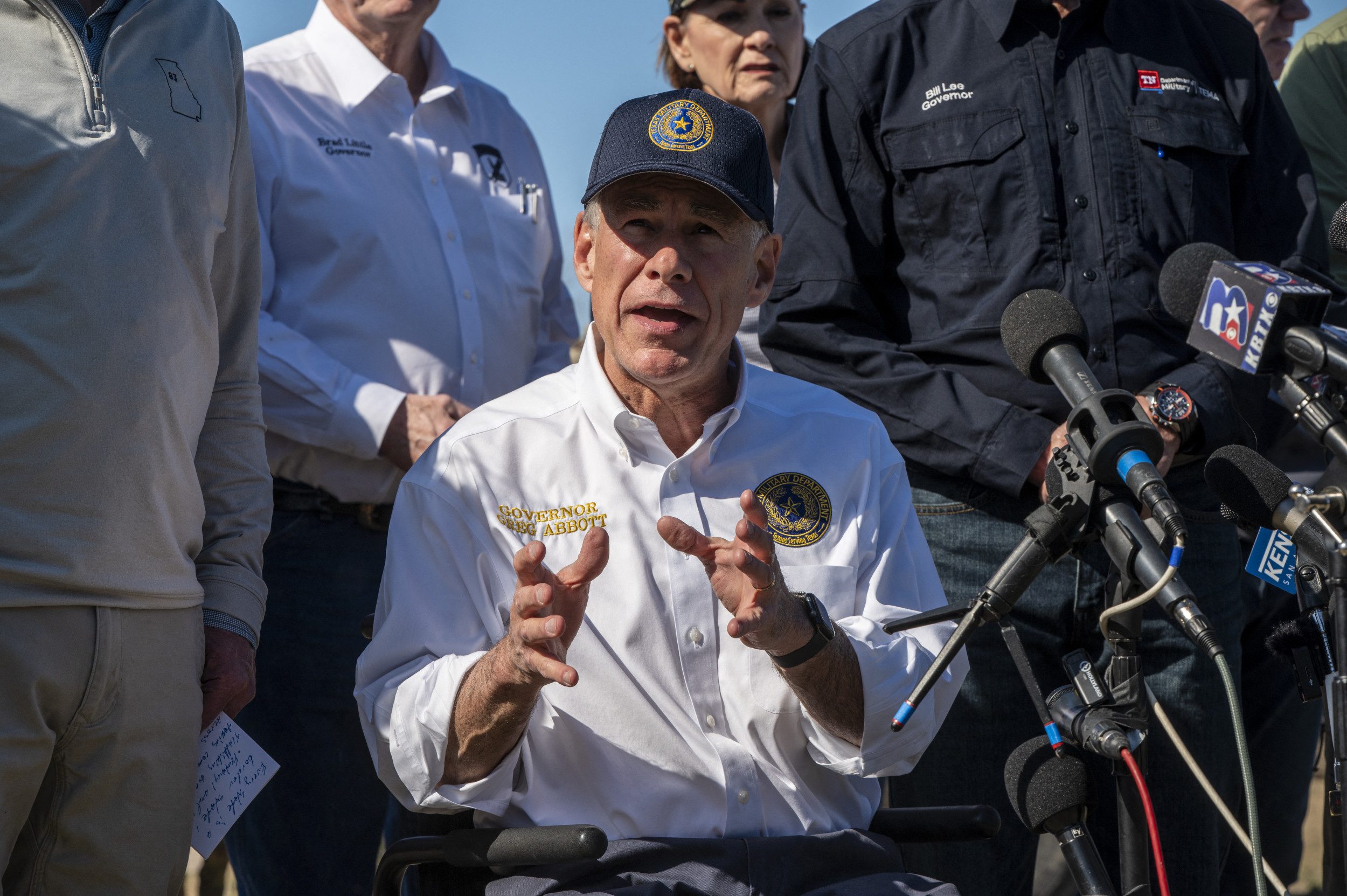The number of migrant encounters on the Texas border dropped dramatically in January compared with previous months, according to new U.S. Customs and Border Protection (CBP) data.
Texas has been the epicenter of the U.S.-Mexico border battle for the past year and a half, as Governor Greg Abbott has taken matters into his own hands due to the perceived inaction of the Biden administration and federal government. That has included lawsuits and federal court battles involving the use of razor wire in high-traversed areas such as Shelby Park in Eagle Pass, and floating barriers in the Rio Grande.
Crossings on the southwest land border in Texas totaled 68,260 in January, according to the CBP statistics—a massive drop from the 149,806 migrants who attempted to enter the country through the state in December. Encounters there totaled 119,628 and 111,129 in October and November, respectively.

SERGIO FLORES/AFP via Getty Images
Though there have been decreases in encounters from December to January in previous years, the drop was bigger than in the same period a year earlier—in January this year there were 81,546 fewer crossings at the Texas border than the previous month, compared with 69,821 fewer encounters recorded between December 2022 and January 2023.
“Migrant crossings fall sharply along Texas border, shifting to Arizona and California. Our stiff resistance is educating cartels not to mess with Texas. Texas will continue erecting more barriers & target more arrests to better secure the border,” Abbott wrote on X on Tuesday.
There were 242,587 migrant encounters across the United States’ northern and southern borders overall in January—a significant drop from the 370,925 encounters documented in December, CBP’s data showed. The number also shows a 65,000-plus decrease compared with October (309,065) and November (308,636).
More than 2.4 million encounters were recorded at the U.S.-Mexico border during the 2023 fiscal year, up from approximately 1.7 million in 2021.
While Abbott has lost some legal fights, including the conservative Supreme Court ruling that federal Border Patrol agents can remove razor wire on the U.S.-Mexico border, he maintains that Texas will continue to expend resources to diminish migrant encounters—including more wire and National Guard troops monitoring the area. Several conservative-led states have expressed solidarity and have vowed to send their own National Guard soldiers to support Texas’ efforts.
Abbott’s popularity in Texas has increased among statewide residents and is equal to Donald Trump, according to recent polling. This is likely due in part to his response to the immigration issue.
The decrease in border crossings comes just days after the U.S. Senate failed to pass a $118 billion, 370-page immigration bill that Republican advocates such as Senate Minority Leader Mitch McConnell and Senator James Lankford touted for addressing issues including asylum, emergency powers for the federal government to deter migrants in large numbers, and billions in foreign aid to Ukraine, Israel and Taiwan.
On Tuesday, the Senate voted 70-29 in favor of a $95 billion package of aid for Ukraine, Israel and Taiwan—legislation that House Speaker Mike Johnson expressed criticism against prior to Monday’s procedural vote due to more inaction on immigration.
The failed Senate immigration package also included an unspecified amount of money going towards some portion of a border wall, which was a major part of Trump’s 2016 presidential campaign.
Colleen Putzel-Kavanaugh, an associate policy analyst with the Migration Policy Institute’s U.S. Immigration Policy Program, told Newsweek via phone that specifics regarding additional border wall construction was likely intentionally vague.
Numerous factors go into such discussions, including the amount of wall, section costs, materials, and bidding out projects to contractors.
“I think they probably didn’t want to put specifics in there because it requires a lot of conversations with other stakeholders on where to actually build,” Putzel-Kavanaugh said.
She traveled to the border last year and spoke with Border Patrol agents about the purpose and utility of a border wall, to which some agents told her that a wall doesn’t necessarily prevent migrant flows but rather act by “circumventing them to certain areas.”
Portions of the border also vary in terms of actual boundary lines, she added, where in some cases migrants could be on U.S. soil before technically surpassing a wall or physical structure to leave Mexico.
“The utility of a wall isn’t necessarily going to stop migration, but what it would do would point people to certain points on the barrier or have a negative impact of being an impairment in someone’s journey,” she said. “It’s hard to know exactly if it would have any [major] impact.”
Uncommon Knowledge
Newsweek is committed to challenging conventional wisdom and finding connections in the search for common ground.
Newsweek is committed to challenging conventional wisdom and finding connections in the search for common ground.
